Where were Manitoba's residential schools and what stands there now?
Some sites have been demolished; other uses range from office to museum

WARNING: This story contains details some readers may find distressing.
In the week after a grounds survey uncovered what appearto be the remains of215 children buried at the site of the former Kamloops Indian Residential School in British Columbia, calls have echoed across the country for similar searches at other sites.
It's a call to action that was already highlighted in the Truth and Reconciliation Commission's final report in 2015.
Former senator Murray Sinclair, who chaired the Truth and Reconciliation Commission, said Canadians should prepare themselves for similar discoveries at other former residential schools.
An estimated 150,000 Indigenous children were taken from their communities and forced to attend the schools. Though it's difficult to say exactly how many residential schools operated over their more than 100-year history,139 have been officially identified.
That number only includes the sites that fell under the federalIndian Residential School Settlement Agreement. There were many more, including day schools and sites that were run without support from the government.
Now, several First Nations in Manitoba have announced they plan to conduct similar searches for unmarked burial sites.
According to the National Centre for Truth and Reconciliation at the University of Manitoba, 14 residential schoolshave been identified in the province.
Here's a look at what we know about them.
AssiniboiaResidential School
- Location: Winnipeg.
- Closed: 1973.
- Status:Now operates as the Canadian Centre for Child Protection.
Located in Winnipeg onAcademy Road, the site of the former Assiniboia Residential School is now home to the Canadian Centre for Child Protection. Only the building that housed the residential school's classrooms still stands on the lot between Academy Road and Wellington Crescent in the city's River Heights neighbourhood.
The federally funded residential school opened in 1958 andran a four-classroom block for students from grades 8 to 12. It also had a chapel, a gym and a library.
Over the 15 years the residential school was open, hundreds of First Nations children were forced to attend. The site was run by the Roman Catholic Church until the government took it over in 1969. It closed its doors in 1973.
In testimony to the Truth and Reconciliation Commission, survivors described a range of experiences at the site. One woman who lived in the Assiniboia residence while she went to high school in Winnipeg described feeling lonely and singled out. Another described a supervisor at the Assiniboia school trying to sexually assault her in the school gym.
In 2017, dozens of former students and some former staff gathered for a reunion at the site. Among them was Elder Ted Fontaine, who also attended the Fort Alexander Residential School northeast of Winnipeg. Fontaine later wrote a memoir about the abuses he suffered atresidential school. He died last month at 79.
BirtleResidential School
- Location: Birtle.
- Closed: 1970.

The Birtle Residential School was initially located just north of the town of Birtle and was later relocated into the town itself. The federally funded residential school was a day school at first and became a boarding school in 1888. It was run by the Presbyterian Church, and for a brief period in the 1920s by the United Church.
More than 7,000 children from grades 1 to 12 were forced to attend the school over the years.
Ray Swan, a member of Lake Manitoba First Nation, told CBC News two of his mother's three brothers were taken to the Birtle Residential School. Neither made it home.
In testimony to the Truth and Reconciliation Commission, some survivors described being abused at the Birtle Residential School, including having their ears pulled or heads shaken if they gave wrong answers in class.

Others described being separated from their siblings, overworked at the school's farm, and watched while they showered and got dressed.
In January, the Birdtail Sioux Dakota Nation where many families have personal connections to the BirtleResidential School announced it would create a healing garden to honour survivors of the residential school system.
The building that once housed the Birtle Residential School was vacant for yearsand has changed hands several times.
Brandon Residential School
- Location: Brandon.
- Closed: 1972.
- Status: Demolished.
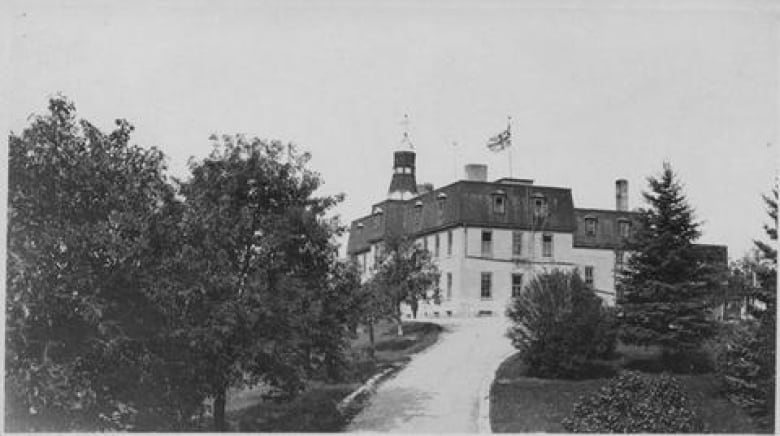
The federally funded Brandon Residential School opened just northwest of Brandon in 1895. It was run at various times by the Methodist Church, the United Church and the Roman Catholic Church. The school closed in 1972.
While enrolment statistics aren't available for some school years, the number of children forced to attend the residential school ranged from only four students some years to as many as 200 in others.
Historical documents show some students at the residential school were experimented on in the 1940s and 1950s, including one study that didnutritional experiments on malnourished students. Another tested for extrasensory perception psychic ability.

The building was torn down in 2000. The site of the former school is now under the care of the nearby Sioux Valley Dakota Nation.
Across three areas near the former school site, Sioux Valley Chief Jennifer Bone said an investigation has identified 104 potential graves. Only 78 are accountable through cemetery burial records, Bone said in a statement.
Some of the known unmarked graves now lie beneath the Turtle Crossing Campground near Brandon. That area was sold by the City of Brandon in 2001.
Churchill Residential School
- Location: Churchill.
- Closed: 1973.
- Status: Demolished.

The Churchill Residential School was established in 1964 at Fort Churchill, an abandoned military base.
While the federally funded and managed residential school wasn't technically religious, the government was informally advised by Roman Catholic and Anglican authorities. The school's hostel also had staff from both churches and students were segregated based on denomination.
More than 1,800 students were forced to attend the residential school before it closed in 1973.
The school's Churchill Vocational Centre had a residence, along with technical and vocational training, mostly for Inuit children. Students who lived there were as young as 10, though the ones enrolled in that centre had to be in Grade 5 or at least 15.
Another smaller group of students lived in the town of Churchill, while Inuit students who lived in the school's residence went to local schools in the town.
The buildings at the Fort Churchill site were demolished in 1981.
Cross Lake Residential School
- Location:Norway House, Cross Lake.
- Closed: 1969.
- Status: Demolished.
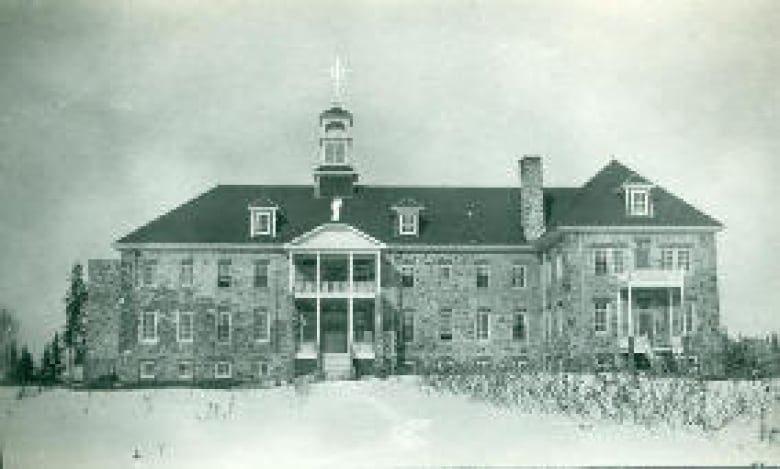
The Cross Lake Residential School existed in various forms and under several different names from its opening in 1912 along the Jack River on Norway House Cree Nation to its closure in 1969.
Over several periods from the 1930s to the 1960s, there were federally funded schools at two locations one at Norway House and one atCross Lake.
The sites were managed by the Roman Catholic Church and later taken over by the Indian and Eskimo Welfare Commission.
There were as many as 149 students from grades 1 to 9 forced to attend at a time.
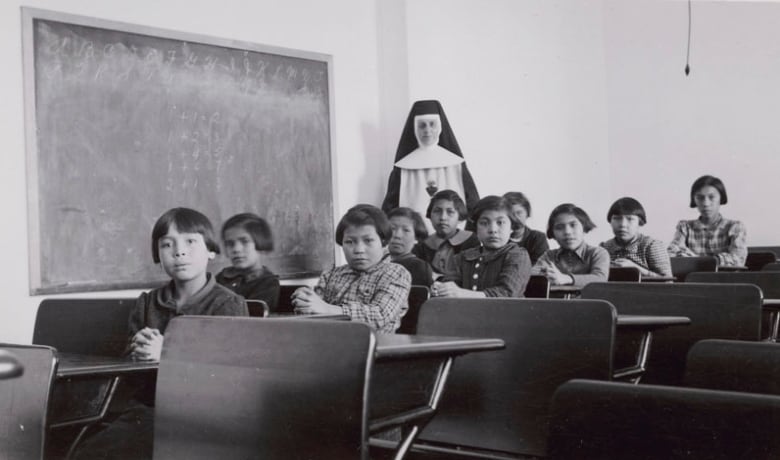
In 1930, a fire destroyed the school, killing one teacher and 12 children. A second school was built in the same spot 10 years later. Following another blaze in 1969, the building and the school's other structures were eventually demolished.
Elders and leaders in thecommunityhave called on the federal government to help them search for burials near the site of the former school.
Chief David Monias and the community's executive council said they are certain there are bodies to be found on the grounds and want to start searching as soon as possible.
The federal government said work is progressing on the subject of funding such searches.
Elkhorn Residential School
- Location:Elkhorn.
- Closed: 1949.
- Status: Demolished.

The Elkhorn Residential School was initially established on four town lots in the village of Elkhorn in 1889. Following a fire, a new one was opened just outside the town in 1895.
The school, which was funded by the government and largely run by the Anglican Church, closed in 1949. Before the school shut down, leaders of The Pas Indian Band made a number of complaints about conditions there.
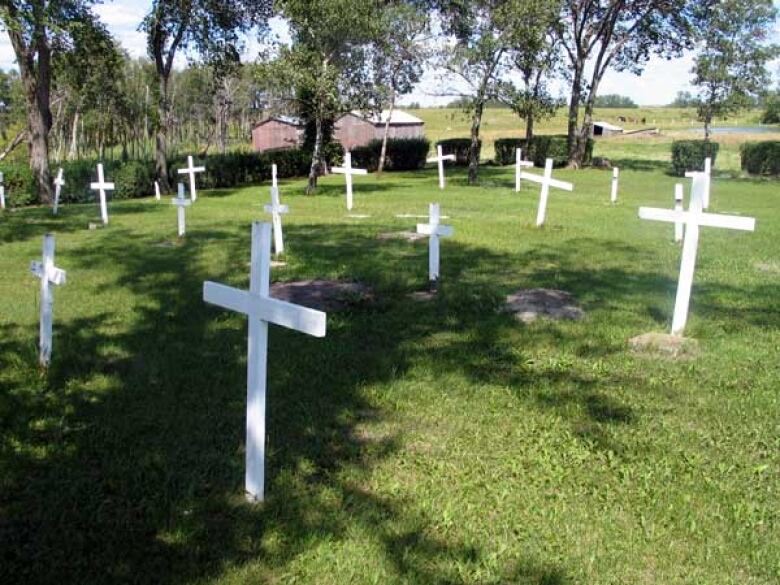
Over the years, more than 5,000 students many from northern Manitoba from grades 1 to 10 were forced to attend.
The building was torn down in 1951, though the ruins are still visible. A nearby cemetery where children were buried sits nearby, where former staff and residents created a monument at a reunion in 1990.
Fort Alexander Residential School
- Location: Sagkeeng First Nation.
- Closed: 1970.

The Fort Alexander Residential School opened on what is now known as Sagkeeng First Nation in 1904. The government-funded school became a hostel in 1969 and closed in 1970. It still operated as a day school for years after.
The site was run by the Roman Catholic Church, and children up to Grade 9 were forced to attend. For five years, there were also high school classes. Enrolment ranged from 45 at its lowest point to 130 at its highest.
In its early years, many students tried to run away. In one case, two boys drowned after trying to escape by boat.
Sagkeeng Chief Derrick Henderson said children from 21 First Nations were forced to go to the Fort Alexander Residential School. Elders in the community have long spoken of unmarked or hidden mass graves, where children who died from neglect, disease or trauma now rest, Henderson said in a media statement sent Friday.
He said the community plans to find those remains and called on the federal government to support survivors and families, and to make sure the search is community-based.
Guy Hill Residential School
- Location: The Pas.
- Closed: 1979.
The Guy Hill Residential School had three different locations, with the first in Saskatchewan until it burned down. The second site opened in The Pas in 1952 and the third was established in 1957 on the shore of Clearwater Lake near The Pas.
The government-funded school, which was run by the Catholic Church, closed in 1979. A number of Indigenous health conferences were held at the school in the 1990s.
McKay Residential School
- Location: Fisher Island and Dauphin.
- Closed: 1988.
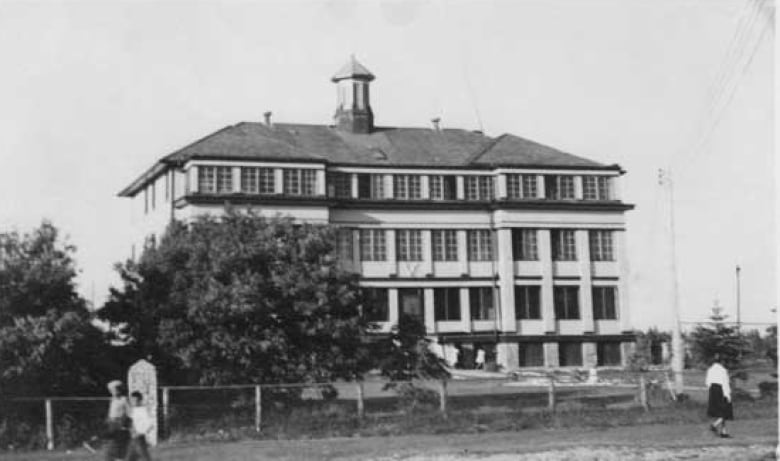
The McKay Residential School (sometimes spelled as MacKay Residential School) had two locations: one near The Pas and Opaskwayak Cree Nation on Fisher Island that ran from 1914 to 1933, and another in Dauphin bordered by Whitmore Avenue, Pioneer Avenueand Ida Street that opened in 1957 and closed in 1969. The government continued to run the residences until 1988.
When the first site was destroyed by a fire in 1933,the residential school did not operate until the second site opened. The school was federally funded and managed by the Anglican Church.
Students in elementary school were initially forced to attend, though more dormitories were built in the 1960s to accommodate high school students who were forced to attend day schools in Dauphin.
Students from kindergarten to Grade 8 were forced to attend the residential school, while high school students had to go to local schools.
The site is now used for community, cultural and sporting events.
Norway House Residential School
- Location: Rossville.
- Closed: 1967.
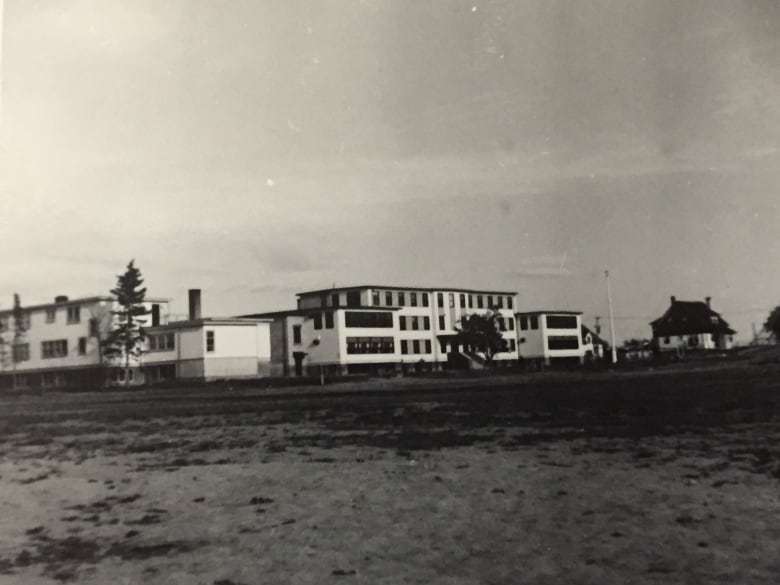
The Norway House Residential School opened in 1899 in Rossville. It was funded by the government and run by the Methodist Missionary Society of Canada and later the United Church of Canada.
In the winter of 1907, a young boy who tried to run away after being physically disciplined was badly frozen and lost several toes. One survivor who was forced to attend the school later described being sexually assaulted by a doctor and being beaten with a belt for speaking Cree.
The original school, which was poorly built and maintained, burned down in 1913. A new one opened two years later. Enrolment was consistently over capacity.
That school burned down in 1946 and was rebuilt in 1954. It closed in 1967 and became a day school.
Notre Dame Hostel
- Location: Norway House.
- Closed: 1967.
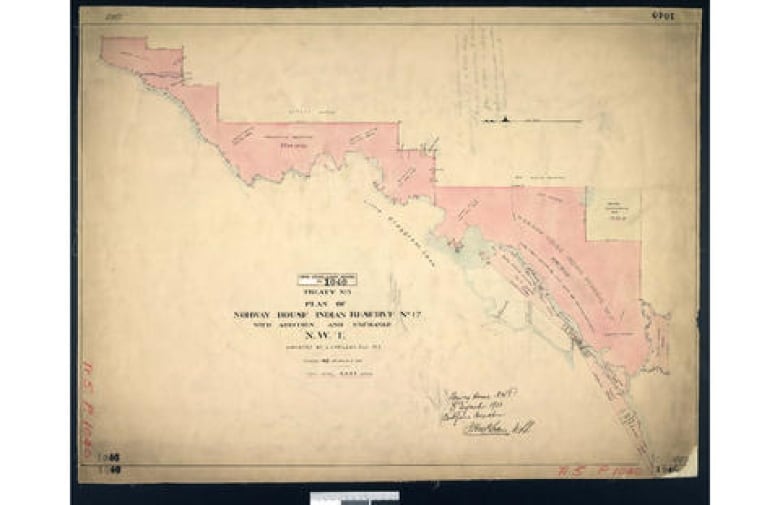
The Notre Dame Hostel, which operated only as a student residence, was located near Norway House on the Jack River. It opened in 1960 and closed in 1967.
Before running as its own entity, the government-funded hostel was an annex of the Cross Lake Residential School. It was run by the Roman Catholic Church.
In 1968, the federal government and the Frontier School division signed an agreement that transferred the area's schools to the school division. Staff at the hostel were given the chance to work for the division after that.
Documents show that students who lived there were forced to go to the Jack River Roman Catholic Indian Day School from grade 1 to 7.
Pine Creek Residential School
- Location: Camperville.
- Closed: 1969.
- Status: Demolished.

The Pine Creek Residential School opened in Camperville on the shore of Lake Winnipegosis in 1890. It closed two years later and reopened in a bigger building in 1894.
An even bigger site was built in 1899, where the school and surrounding farmland covered over 600 acres(about 240 hectares).
Students from grade 1 to 9 were forced to attend. The site included a chapel and later a large stone church.
In 1928, eight boys ran away at once. Two years later, a boy was caught trying to burn the school down.
The government-funded school, which was run by the Oblate Fathers of Mary Immaculate, closed in 1969. Students were transferred to the Guy Hill and Sandy Bay residential schools.
The original stone school was demolished in 1972, though some of its foundation is still present. A monument honouring the students forced to attend the Pine Creek school was later built next to the Our Lady of Seven Sorrows Roman Catholic Church along the west shore of Lake Winnipegosis.

Portage la Prairie Residential School
- Location: Portage la Prairie.
- Closed: 1975.
- Status: Now operates as a national historic site.

The Portage la Prairie Residential School wasestablished in 1891 just outside the city of Portage la Prairie. It later moved to river lots along Crescent Lake Road in the community.
Starting in 1957, the government-funded site only operated as a student residence. The school was run by the Presbyterian Church, and later the United Church.
It shut down in 1975.
The 1916 building is now a national historic site run by Long Plain First Nation, which acquired the space in 1981. The site named after Rufus Prince, a residential school survivor, chief and Second World War veteran now houses a museum and archives.
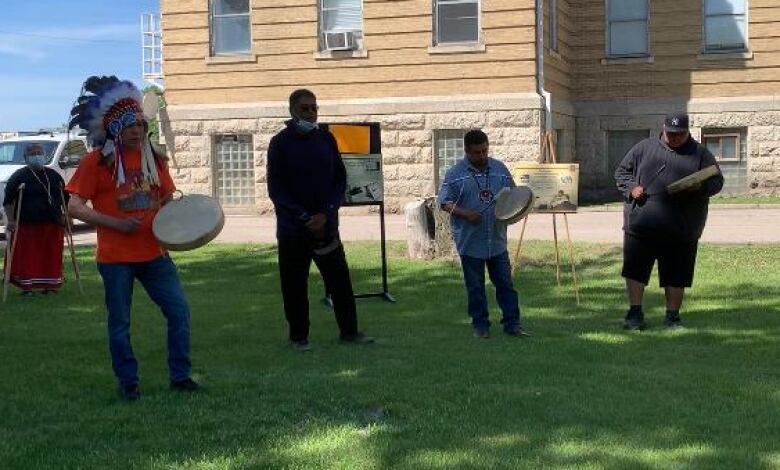
Sandy Bay Residential School
- Location: Sandy Bay Ojibway First Nation.
- Closed: 1970.
The Sandy Bay Residential School was established on Sandy Bay Ojibway First Nation in 1905 on about 100 acres (40 hectares) of land.
Many of the first children forced to attend the school were from that First Nation. By the late 1940s, the school was severely overcrowded. One government report concluded it had twice as many students as it could reasonably accommodate.
The government-funded, Roman Catholic Church-run school closed in 1970. Ownership was transferred to a local day school.
Support is available for anyone affected by their experience at residential schools, and those who are triggered by the latest reports. The Indian Residential School Survivors Society (IRSSS) can be contacted toll-free at 1-800-721-0066.
A national Indian Residential School Crisis Line has been set up to provide support for former students and those affected. Access emotional and crisis referral services by calling the 24-hour national crisis line: 1-866-925-4419.












_(720p).jpg)


 OFFICIAL HD MUSIC VIDEO.jpg)
.jpg)



























































































